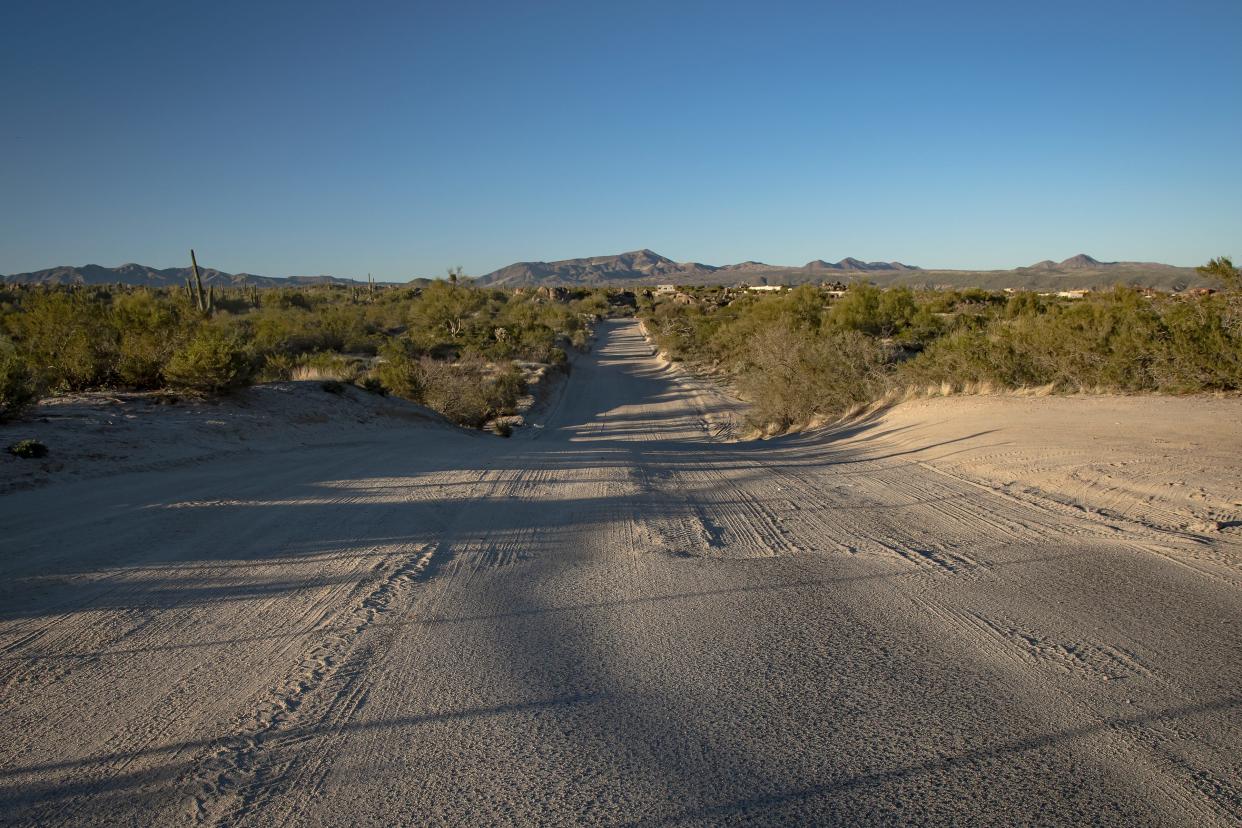We all may pay to fix Rio Verde Foothills' water problems. That's no solution

How do you say, “this is not a solution” without really saying it?
Read EPCOR’s application to offer water to some residents in Rio Verde Foothills.
That’s not a criticism. The private water company, to its credit, is the only one officially asking to help homeowners whose taps will soon run dry, even though it makes clear in its application that the service makes no financial sense.
But it proves, again, how big of a pickle the unincorporated community north of Scottsdale is in – and how big of a mistake it is to let people build on temporary supplies and then try to save them when the water runs out.
It's unclear where the water would come from
EPCOR is proposing to build a standpipe somewhere in or near the Rio Verde Foothills area. It doesn’t have a precise location because it doesn’t yet have a water source.
Confidential negotiations are underway to find that water, the company notes in its application, but most likely, it will need to dig a well.
Presuming that’s how this goes – that EPCOR draws out finite water from the area without replenishing it – it’s anyone’s guess how long it will last.
What next?: County rejects Rio Verde Foothills' water district proposal
This part of the aquifer is spotty. Water is not distributed evenly throughout Rio Verde Foothills, and there are already plenty of straws in the ground. Some residents with existing wells have seen them go dry over the last few years.
Not to mention that if EPCOR can find a spot with enough water, it could have problems with arsenic, requiring the water to be treated before it is delivered.
Providing it would be extremely expensive
No wonder the company predicts it could take at least two years, maybe even three or more, to get a standpipe up and running, even though service for those currently hauling water from Scottsdale will end in a couple of months.
It’s unclear what will happen in the interim.
EPCOR estimates it would have to charge residents $20 per 1,000 gallons to use this service, though that could go up or down, depending on the project’s final costs.
That’s significantly more than what they are paying for water now, and significantly more than what the company charged to provide a standpipe for New River residents who were in a similar pickle a few years back.
That’s because EPCOR was able to use existing infrastructure to bail out those homeowners. In this case, it must secure water rights and fund construction.
Twenty bucks per 1,000 gallons equates to roughly $6,500 per acre-foot – which is more than twice the wholesale rate for desalinated water, one of the most expensive water sources out there.
Customers elsewhere might be on the hook
As if that wasn’t a deal killer – because no homeowner is going to pay that much for water – EPCOR also says that it can’t make any of this work without consolidating the Rio Verde Foothills standpipe into the company’s larger Sonoran Water District.
Because so few residents are expected to use the standpipe (the area’s estimated annual demand is a mere 150 acre-feet), the company may need to spread some of the costs across a larger base of customers who don’t live in Rio Verde Foothills in a future rate case.
This is not a solution.
Especially considering that EPCOR only plans to serve homes that exist by Jan. 1, 2024. And construction shows no signs of stopping in the area.
Rio Verde Foothills is not an isolated case
That’s the problem.
We let people build on temporary water supplies. And we don’t make them sign something that plainly states, “I understand that if the water runs out, no one is coming to help me.”
State lawmakers have no interest in changing the laws that put homeowners in this situation. And while county supervisors say they are powerless to stop construction, they could require those that build on a finite water supply to be as efficient as possible, with rain barrels and grey water systems to capture and reuse as much as they can.
Because this is hardly the only place where a lack of renewable water will come home to roost. There are “wildcat” subdivisions like those in Rio Verde Foothills all over the outskirts of Maricopa County, near Prescott and in places like Strawberry and Pine.
We refuse to stop this on the front end. So, when we scramble to fix the mistake on the back end, with residents who built on stronger footing being asked to share that burden.
This is not a solution.
Reach Allhands at joanna.allhands@arizonarepublic.com. On Twitter: @joannaallhands.
If you love this content (or love to hate it – hey, I won't judge), why not subscribe to get more?
This article originally appeared on Arizona Republic: EPCOR may offer water to Rio Verde Foothills, but it's no fix

